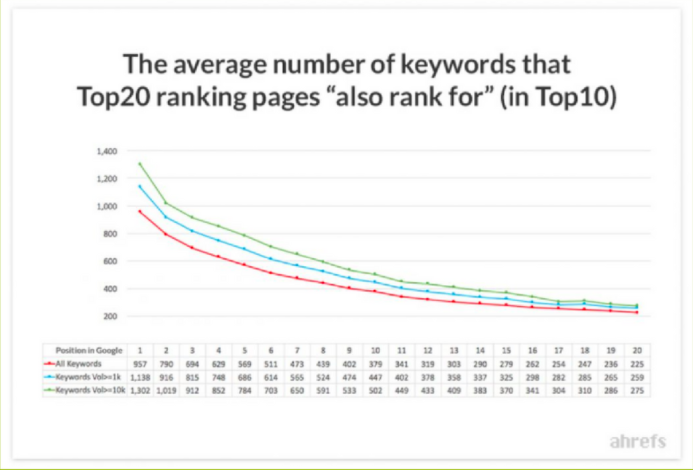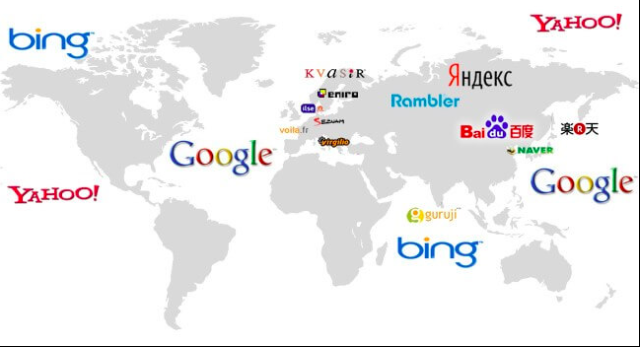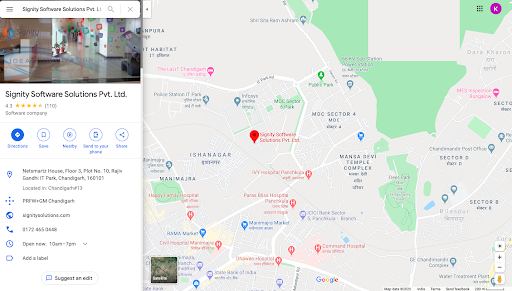As Digital is becoming more accessible, the subtle line between local and global is slowly fading away. Search engine optimization is a great source for gaining traffic, especially when you’re catering to an international audience.
International SEO, when executed effectively, yields higher ROI for all businesses irrespective of their size and operations.
SEO can drive a 14.6% conversion rate. For an added context, print ads and direct mail deliver a 1.7% average conversion rate.
If your website is gaining traction from a global audience, it’s preemptive to expand and optimize your business’ web presence globally.
In this article, I’ll explain 11 best SEO practices for international websites, suggesting ways to expand to new markets whilst avoiding potentially expensive mistakes.
Use these SEO insights to verify whether or not your website is optimized for global SEO and discover additional value points to boost your existing SEO strategy.
A Quick Summary
Here are 11 key SEO strategies to grow your business in the global market:
- Optimize URL structures
- Benefit from meta content tags
- Conduct a global keyword research
- Implement Hreflang Tags
- Leverage local translators
- Optimize category pages
- Strategize SEO for all the major search engines
- Use International SEO signals
- Get localized backlinks
- Use ‘Purchase intent’ keywords
- Implement correct Schema architecture
Globally Optimized URL Structures
In the hierarchical domain name system of the Internet, ‘.com’ domains are considered as the cream of the crop. Though anyone in their right mind would suggest you to go for .com domain, I’d suggest otherwise.
Why?
‘.com TLD domains are too generic to attract an international audience.’
That said, here are some suggested URL structures that webmasters can employ for international websites:

- ccTLD
According to the 10NOS Digital guide, Country-code TLDs are domains that reflect a website’s relation to a specific country, state, or region.
- Subdomain
Using a subdomain, you could place the international content of your website on a separate ‘third-level domain’.
Employing a subdomain gives you the added ability to manipulate, transfer, or receive link equity from the root domain.
- Sub-directory
In this particular case scenario, internationalized vernacular content is first created, then placed in a separate folder, or a new directory of the root domain.
Meta Content Tags
Meta tags are tiny descriptions which are invisible on-page. They describe your content, tell search engines what your page is about, and suggest the text to display in SERPs.
These tags aren’t included in the page content, but rather in thesection of the source code. Use the meta content-language tags to notify the search engine about the HTML pages’ language.
Let’s have a clear understanding by using Language-target meta tags as a reference.
Language-target meta tags notify the search engine for the language a current webpage is written in—helping the search engine index the webpage for your selected global territory.
Example:
<meta http-equiv=”content-language” content=”en-us”>
The language needn’t always be ‘en-us’; if your webpage is in Spanish or any other language, replace the content variable’s ‘value’ with the name of that particular language.
Global Keyword Research
It’s a common practice for businesses to use and employ literal translations in place of locally researched keywords. Though simple, this particular approach doesn’t generally yield positive results.
To improve keyword accuracy, it’s important to ensure you conduct thorough keyword research in the native language of your selected global territory.
Also, pay close attention to the keywords actively used by your competitors in selected countries. This offers a better insight, and helps you refine your keyword research.
Hreflang Tags
Hreflang tags are amongst one of the most important aspects of global SEO. Though a meta-tag, these are specifically used to particularize the language and geo-location of a website.
In other words, hreflang tags enable you to cross-reference different web pages with similar pieces of content.
Now, let’s understand the hreflang tag with the help of an example:
If you search for the keyword ‘Tesla’ in Canada, you get this result:

But when you search for the same keyword in France, you get this

Wonder how Google shows different results for different locations?
Courtesy of Hreflang tag.
Leverage Native Language Translators
Google Translate works like a charm most of the time, but employing it to translate your entire content might not work in your best interests.
Why though? For it would miss out on subtle yet important prepositions, and often confuse formal with informal tone- that’s not good for your brand’s image.
Instead, you could work with people having excellent native language skills in the country you’re targeting. This would enable you to choose the right words, and hit the pain-points that’d lead your customers down the sales funnel.
Optimize Category Pages
Your international SEO efforts would reap great benefits provided you optimize your category pages for top-priority keywords.
Optimizing your category pages plays a critical role in attracting the right traffic and thereupon promotes conversions.
Also, it’s important to point out that category pages often fail to convert for the lack of content.
Though there’s no magic word fairy to review your word count, research clearly states that long-format content copies translates better.
Here’s an Ahref’s study to make my point:
An average top-ranking page positions for over 1,000 related keywords. Now that practically isn’t achievable with the short-format content.

Leverage all the Major Search Engines
Google, without a speck of doubt, is the most popular search engine worldwide. But it’s not the only one.
There are a myriad of other search engines, including Bing, Yahoo, Yandex, Baida, and more.
Whilst Google is popular in the US, other populous countries in the world prefer alternate search engines.

The reason it’s necessary to adjust your Global SEO strategy for different search engines includes, but aren’t limited to:
- Each Search Engine works according to different algorithms and has different ranking factors in place.
- Not all search engines accept the same website markup. For example: Markups that determine the page versions, such as Hreflang annotations, are accepted by Google and Yandex, but not by Bing.
Employ International SEO Signals
When optimizing your business’ webpage for an international market, you could benefit from different SEO signals.
For the sake of this example, let’s talk: Geo-targeting.
Geo-Targeting SEO is the practice of optimizing your web page’s content for a targeted location.
But here’s a fun question: How can an International website benefit from geo-targeting?
Here’s how.
You host your international website on the selected country’s local servers. Search engines will look for your geolocation and when they find that you’re local, they’d place your website in the local pack of that particular country.
Localized Link-Building
Link-building is an essential SEO practice to build the authority around your website. Whether domestic or international, it’s quintessential to source links from local establishments.
Gaining good, high-quality links, though, is always a challenging feat—regardless of the size of your company.
When penetrating a new market, it’s recommended to stay proactive, and actively seek out journalistic opportunities, to create guest posts and build relationships with local businesses and influencers.
Purchase intent’ keywords
We can’t stress enough on the importance of strategically using keywords, and their significance to the SEO strategies- be it domestic, or International.
But what we’d stress upon is this: Include plenty of purchase intent keywords in your content copy. Not to mention, keep your copy natural and don’t add keywords just for the sake of adding more keywords.
Ultimately, the web page you’re creating is to serve the end-user and not the search engines. SEO, if anything, helps with driving conversations, and churn in higher revenue.
Clean Site Architecture
Seamless architecture makes up for a better customer experience. Businesses often misjudge how essential plain and simple navigation is to the user, as well as the search engine.
To benefit from clean site architecture, the easiest way is to ensure that categories are linked to the homepage, and individual products/services are linked to their associated category pages.
Another great SEO tip is to implement breadcrumbs to improve your website’s UX.
Breadcrumbs are small strings of text paths, indicating the user location on the website.
They also help Google and other search engine crawlers with identifying your site’s structure.
Location Snippets
All the popular search engines offer location snippets that allow you to list all your business locations, in order to know where you physically operate and to help people locate your facility on the map.
One example of location snippets is Google My Business.

Listing your business on ‘Google My Business’ makes it discoverable to the locals, whenever they search for a product or service that is similar to your catalog.
Global SEO – Conclusion
The opportunities you unlock by identifying, applying, and having a global SEO strategy in place are bountiful.
However, be informed that tactics you use for local SEO vary from the ones you’d use for global SEO; the differences are subtle but essential to the success of your business.
When implementing global SEO, you have many options. You can hire and train in-house SEOs to strategically implement global SEO, or outsource it to consultants or even to offshore companies and enjoy the same benefits at a fraction of the costs.

